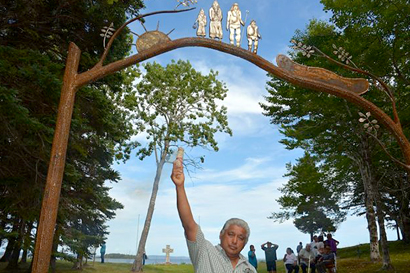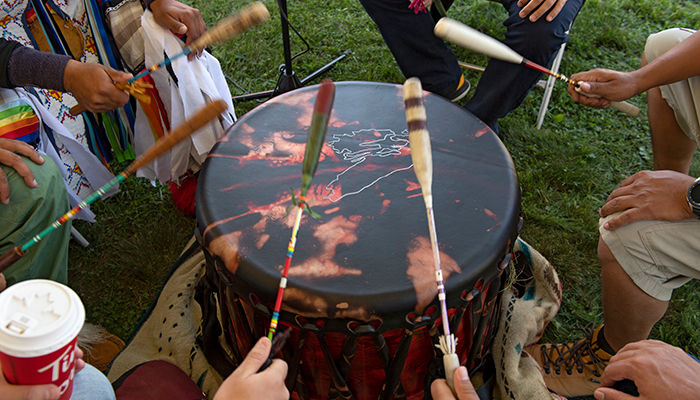October is Mi’kmaq History Month
Proclaimed in 1993 on Treaty Day (October 1) by then Premier John Savage and Mi'kmaq Grand Chief Ben Sylliboy, Mi'kmaq History Month features educational and cultural activities, providing all Nova Scotians with the opportunity to improve their knowledge and awareness of Mi’kmaw culture, history and heritage.
In the Department of Communities, Culture and Heritage, Mi’kmaq culture is recognized year-round. Through funding opportunities, research projects, policy support and services, the Department works to better understand and serve Mi’kmaq communities throughout Nova Scotia.
In 2013, the Department co-created the Mi'kmaq Cultural Activities Program, a funding program that supports Mi’kmaq artistic and community cultural development. The program complements other funding opportunities that support underrepresented groups, such as the Equity Funding Programs and the Diversity and Community Capacity Fund.
For the Mi’kmaq Environmental Learning Centre, the new program has already proven valuable. “The Mi’kmaq Cultural Activities Program helped us bring community members together with a local artist to design and build a beautiful archway into the cemetery in Malagawatch,” said Nadine Lefort, the Centre’s Education and Outreach Coordinator.
“Malagawatch A’tukuaqnn is about commemorating people who lived and are buried in Malagawatch, honouring those who continue to live in Mala, and those who will live there in the future.”
 Community member smudging the archway at the cemetary at Malagawatch.
Community member smudging the archway at the cemetary at Malagawatch.
In addition to funding support, the Department also regularly advises on matters related to archaeology and legislative requirements through the Special Places Program. For example, staff members continue to work with Mi’kmaq organizations to implement a collaborative review of research permits related to the Debert Archaeological Resource Impact Assessment Regulations.
At the Department’s public institutions, collaboration with Mi’kmaq communities and researchers has been integral to the development of engaging projects and exhibits, as well as providing numerous opportunities for curatorial and collections management training initiatives.
One of the latest examples of such work is the release of a Nova Scotia Museum Collections curatorial report entitled The Mi’kmaw Bestiary. A valuable source document, the report is an extensive compendium that captures many historical “written” words (orthographies) for Mi’kmaw words relating to animals.
The Nova Scotia Archives also serves as an important access point to many Mi’kmaq related resources thanks to the Mi’kmaq Holdings Resource Guide. Featuring audio recordings, images, artifact information and archival documents, the resource guide explores tangible pieces of Mi’kmaq history, complementing a rich culture that is traditionally expressed and preserved through testimony, hieroglyphic literacy and the white beads of ulnapskoq (wampum).
Ultimately, the goal of this work and these initiatives is to help the Department build and strengthen positive relationships with Mi’kmaq communities, and to promote the importance of culture and heritage to the economic and social health of all Nova Scotians.

